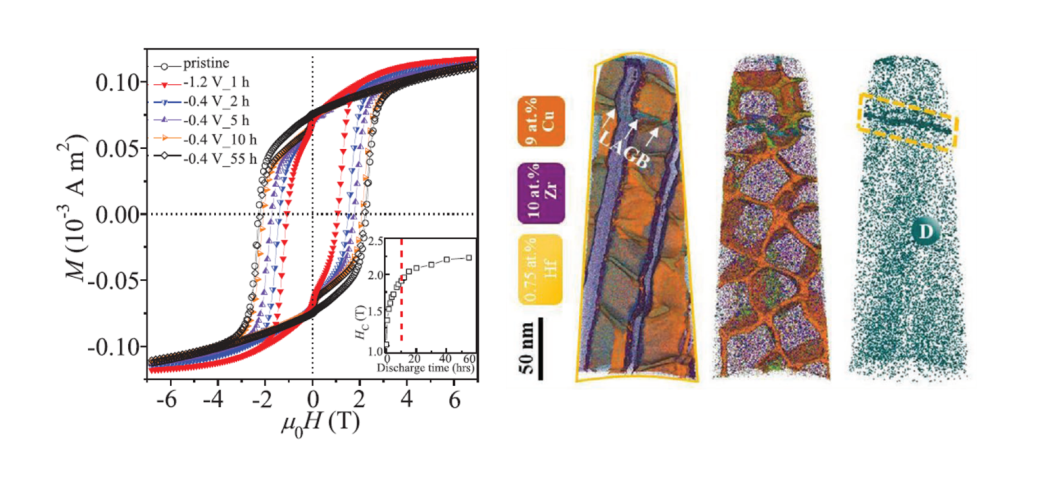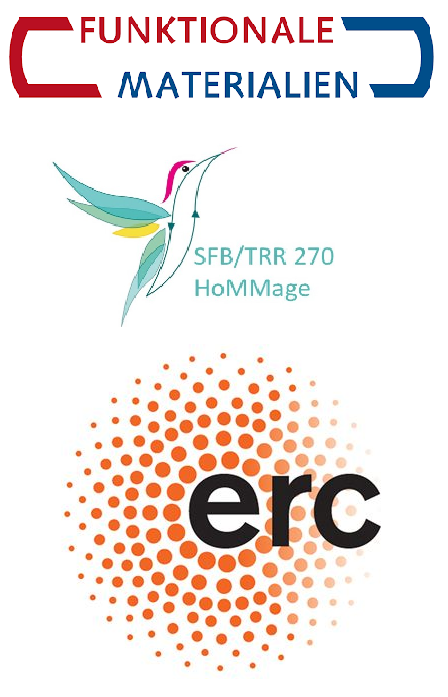Magnetoelectric Tuning of Pinning-Type Permanent Magnets through Atomic-Scale Engineering of Grain Boundaries
New publication
2021/01/14

X. Ye, F. Yan, L. Schäfer, D. Wang, H. Geßwein, W. Wang, M. R. Chellali, L. T. Stephenson, K. Skokov, O. Gutfleisch, D. Raabe, H. Hahn, B. Gault, and R. Kruk
Adv. Mat. 2020, 2006853
Pinning-type magnets with high coercivity at high temperatures, especially Sm2Co17-type magnets, are at the core of thriving clean-energy technologies. Despite intensive efforts to optimize the intragranular microstructure, the coercivity currently only reaches 20–30% of the theoretical limits. In our recent work with the Karlsruhe Institute of Technology and Max-Planck-Institut für Eisenforschung the coercivity in commercial Sm2Co17 magnets is reversibly tuned by an unprecedented value of ≈1.3 T through hydrogen charging/discharging by applying voltages of only ≈1 V. Combining magnetic measurements, in situ magneto-structural characterization and atomic-scale tracking of hydrogen (deuterium) atoms reveal that the segregation of hydrogen atoms at the grain boundaries, rather than the change of the crystal structure, dominates the reversible and substantial change of coercivity. This study reveals importance of grain boundaries in the conventional magnetization switching paradigm of pinning-type magnets, suggesting a critical reconsideration of engineering strategies to overcome the coercivity limits.



